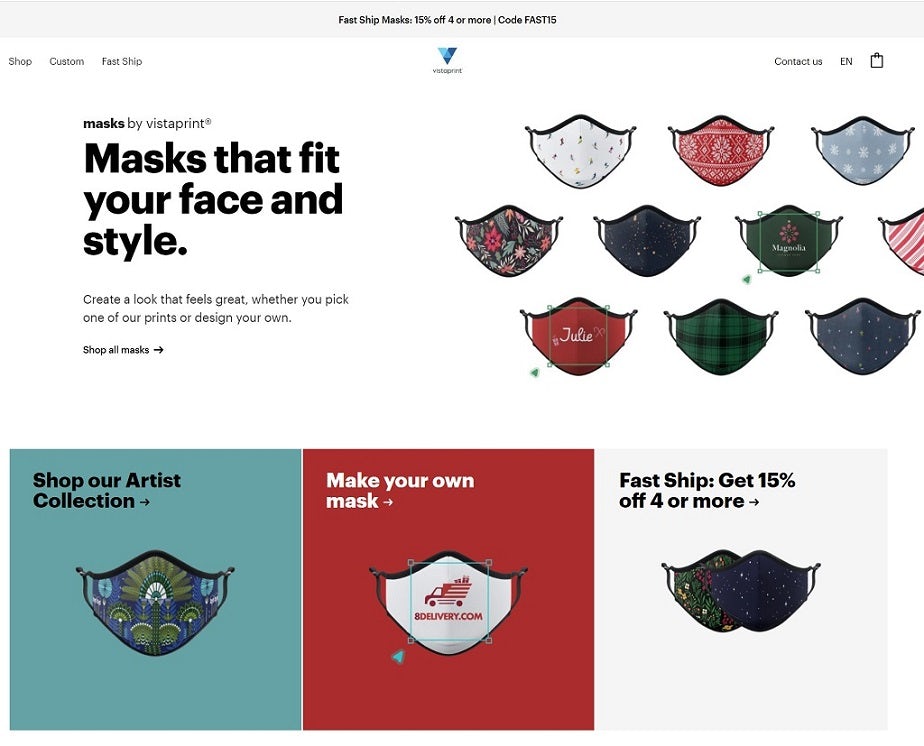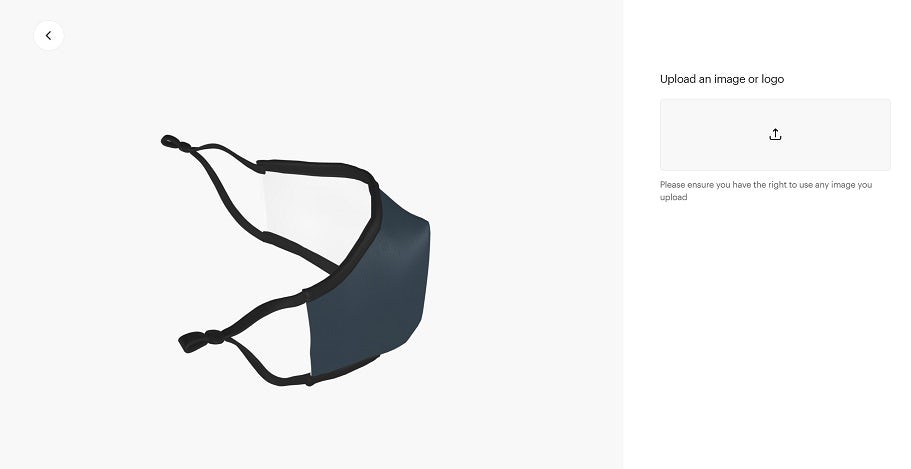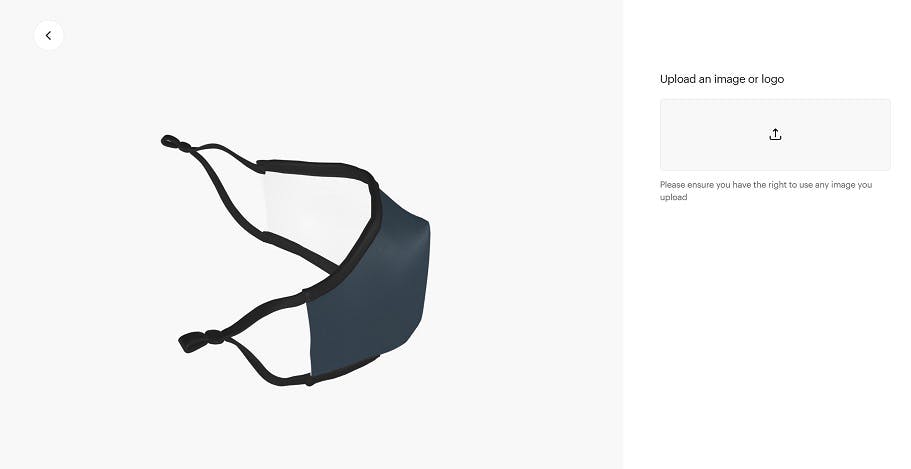Emily Shirley, GM at Vistaprint UK and Ireland, talks about how Vistaprint was able to get a brand new masks offering online in just two weeks, and what the company learned from moving fast and breaking its internal ‘rules’.
As the coronavirus pandemic took hold across the world, it quickly became apparent that there was one item everyone would need that few people already owned: a mask.
According to Google Trends data, worldwide searches for “mask” climbed sharply upwards in mid-to-late February 2020, before beginning a much more dramatic climb in mid-March 2020, reaching their highest peak in mid-April. Another, slightly smaller peak took place between mid-June and late July, and although demand has lowered since, at its lowest level search volume is still double what it was at the beginning of January 2020. Google searches for “face mask” display the same trends with lower volume.
Many businesses have pivoted or reinvented their offerings in different ways during Covid-19, either due to necessity or in order to better serve their customer base. Vistaprint, the online small business marketing and graphic design services company best known for its business cards, is no exception. In the early stages of the pandemic, Vistaprint made the decision to start selling masks, a product that it had never sold before – and not just any masks, but fully customisable, high-quality masks that people would want to wear.
I spoke to Emily Shirley, General Manager at Vistaprint UK and Ireland, about why Vistaprint decided to branch into selling masks, how the company pivoted to design a new ecommerce experience in just two weeks, what the team has learned from the venture and about the importance of being agile, and what lies in store for the future.
Building a “completely new experience”
“The inspiration [for building an ecommerce site for masks] was actually very simple,” says Shirley. “There was this huge crisis going on, and we saw that both our consumer and our business customers were really impacted by it.”
In Italy, which was the first European country to implement major lockdowns, Vistaprint’s parent company Cimpress had a plant that began working to produce masks locally – “and it became very apparent to us that it was something we needed to do to protect our small business customers. The only way they could survive in this environment was to reopen – and we saw masks as one of the key ways of doing that.”
Looking ahead to the longer term, Vistaprint also recognised that masks would become part of the ‘new normal’ for the world. “If we were going to get through this and come back to some sort of ‘new normal’ – protection and mask-wearing would be a requirement of that. Hence, the investment that we put in to make this happen.”
For a few weeks, Vistaprint sold a very simple cloth mask that met local requirements in Italy, but the company’s goal for producing masks was to create something that wasn’t “entry-level”, but that was comfortable, stylish and effective – “a fashion mask”, as Shirley puts it. “We built something that was at the top of the quality level, that wasn’t a cheap, entry-level thing – we had a top-quality filter in there; the materials were really top of the market.
“It had a nose wire, so it doesn’t fog your glasses up; it had a 3D chin – we really tried to build something that was not only stylish, but also comfortable. We used the best access to knowledge that we had about how to create something that allowed people to work and to protect those around them.”
When the company set out to develop a completely new product line and accompanying ecommerce experience, Shirley says, “What we did essentially broke all the rules, because it was clear we needed to do this very quickly.” Vistaprint put together a cross-functional “tiger team” featuring experts from almost every department, from supply chain and printing experts to legal experts – “because the rules around face masks were so vague at the time” – and members of the consumer marketing and B2B marketing teams, in order to better understand what it was that customers wanted.
This was accompanied by “a lot of customer research”, including consultations with a live customer panel that Vistaprint retains in order to gain an insight into consumer needs.
Normally, Vistaprint would have looked in-house to develop the ecommerce experience for the masks, but “this was something completely different”. Instead, they approached digital product agency Work & Co, who worked with them “to build a completely new experience”. Vistaprint and Work & Co had the new site up and running, using brand new technology that had been developed specifically for the site, together with a process for creating and delivering the product – all in just two weeks.
“We carved it out into the core experience, so that it wouldn’t be limited by history,” says Shirley of the new ecommerce site. “And there have been features that we created for the masks site that are now gradually filtering down into our core experience. It’s been a great opportunity for us to learn – just by trying something new where we weren’t limited by any history.”

Vistaprint’s masks ecommerce site, featuring its Artist Collection and customisable masks (Image: Vistaprint)
Visibility over pushiness
When Vistaprint launched their new mask line, the biggest initial problem they had was too much demand. “The demand was insane – people really were crying out for a top-quality mask,” says Shirley. “We needed a lot more capacity than we thought.”
Initially, the masks that Vistaprint produced weren’t customisable, but the company later transitioned to a print-on-demand production model, which solved the capacity issues and also worked well when customisation was introduced, as customised products are print-on-demand anyway.
“We very specifically decided not to be pushy about it,” Shirley says of launching the masks. Vistaprint did a lot of work with organic search optimisation to make the masks visible and easy to find for anyone who might be looking for them – “but we really didn’t want to be pushy; we didn’t think it was appropriate to be pushy.”
The company has maintained this approach to marketing the masks even several months on from the initial launch, with messaging that is designed to be “as authentic as possible”.
“It’s a different product from the others that we sell,” says Shirley. Vistaprint did offer a discount on the masks for the first time on Black Friday, as the team felt it would be unfair to leave the masks out of the traditional holiday discounts when they were something that a lot of people needed, but overall Vistaprint has continued to opt for discoverability over more traditionally forward marketing and sales tactics.
Over the summer, Vistaprint began running paid search ads for the masks on Google because “we felt that making it findable was important, and people would want to find it in those sorts of channels”. The mask is also kept “very visible” in Vistaprint’s email and social media marketing “because we want people to know we have it – but the messaging is not pushy. It’s something that we felt is not compatible with the product, I guess.”
Vistaprint has also made a point of giving back with the face mask sales, donating 6% of proceeds in the UK to the Young People Relief Fund, which is operated by The Prince’s Trust (of which Vistaprint is an official patron), in recognition of the hugely detrimental impact that the pandemic has had on many young people and their prospects. It also partnered with On Hand, a charity that helps people who are unable to easily leave the house, to donate and distribute masks to those in need.
Following the peak demand for masks when Vistaprint first launched, the team has experienced a number of additional spikes in demand, particularly when governments make announcements concerning lockdown restrictions. “Some of these spikes are five, ten times what the normal run rate is,” says Shirley. Demand was also “very high” during the summer months, although during the autumn, it tailed off in some European countries where people now have their masks, and are only coming back occasionally to replace them.
“We expect some level of maturation of this market,” says Shirley. “At some point in time, people will have a selection of masks that they use, and they will only then go and buy a new one when they need it. I don’t think we’re going to have another six months of government announcements that are going to be driving this.”
Looking ahead to the longer term, Shirley hopes that other countries outside of East Asia adopt the norm of wearing masks whenever they’re ill – “not because we sell them, but because when you’re sick, you protect people from it … I’m not sure if it fits our culture, but I hope we’ve learned from this, and it does become something we do.”
However, Vistaprint has plenty of ideas for where it can go and other product lines it could start producing on the back of its experience with the masks site. “This has added new capabilities to the company that are going to make us potentially stronger in the future.
“The ability to provide a completely cut and sewn, fully-printed product – there are a million different things you could do with that. Right now, we’re focused on masks – the line is completely saturated with demand for that now, and as that starts to decline, we’ll start looking at what other areas could be.”
Evolving and learning from the experience
Vistaprint hasn’t been sitting back and twiddling its thumbs since the initial launch of the masks ecommerce site. “We’re continuously adding features to the site – we’ve added customisation, we’ve added more licensed content, including our artists’ collection, which was a really new experience for us; we worked with artists to design masks that were reflections of the art that they create elsewhere,” says Shirley. “People really connected with those, because it’s part of their identity.”
Vistaprint has also evolved both the design of the masks and the way they are presented on the site. In Europe, the company worked with a Belgian business to create a washable nanofibre filter for the masks instead of a replaceable filter, because consumers were wearing their masks without a filter instead of bothering to replace it.
When Vistaprint introduced mask personalisation at the end of July, the team also built a 3D studio that would create a full 3D rendering of the mask and project the customer’s chosen image onto it in a way that very closely resembled the end product, including fabric texture, and which customers could rotate and view from multiple angles to get a feel for how the product would look.
“In general, when we help people to create designs, we try to show the product,” explains Shirley, “but of course this is a 3D shape – so it was very important to help the customer to see it in 3D.”

The Vistaprint 3D studio was designed to allow customers to view a more realistic image of their product and get a sense of how the mask will appear from different angles. (Image: Vistaprint)
The team had a lot of experience with some things that went into creating the masks, such as printing fabric and building interesting and relevant fabric patterns, which was handled by Vistaprint’s in-house design team; others were very new. “There’s a lot we’ve learned from this,” says Shirley. “Going into this very ‘fashion forward’ view, that was completely new for us. It was clear it was needed; people wanted to make a statement with their masks.”
Later on, Vistaprint shifted away from emphasising the fashion side of the masks, choosing instead to focus on the fit. “What we’ve found is that if you look around now, there are so many people wearing masks that obviously don’t fit. They’re hanging over their nose, they’ve got sore ears… The worst one is when people are wearing masks that are obviously not tight enough around the face, and so they’re breathing the mask into their mouth. We had a very clear structural design, so that was an area where we had a performance above the rest.”
I ask Shirley what lessons Vistaprint has been able to take away from designing and launching a brand new product and new ecommerce experience in such a short space of time.
“What we discovered is what I think a lot of other companies in that position have discovered: when you’re forced to do something like this, that’s when your creativity comes out,” she replies. “In a world where ‘agility’ is a big buzzword and a big reality for many of us, execution on the tightest of deadlines taught us a lot about really using the agile processes we’ve put in place, using cross-functional teams – of breaking the rules when we needed to. We didn’t follow our internal processes because we needed to get high-quality face masks into the market as quickly as possible.
“That meant we did something that really taught us how to do things in the future. These things are going to keep on coming up – it might not be a virus, but it could be a new competitor in the market, or a problem with the site, or a sudden new capacity that everyone else has got and you don’t. It’s these moments where we learnt that you throw the rulebook out of the window and you just do the most important things you can in the least possible time – and deliver them.
“The experience has added a lot of capabilities to our company. It’s a real baptism of fire, and we’re all going to go through things like this in our companies. It’s these moments where you see just how much value the people you’ve got in the organisation can bring.”
Ecommerce trends in 2021: What do the experts predict?







